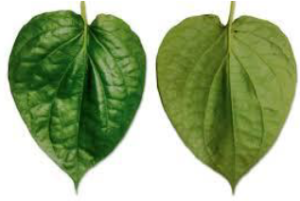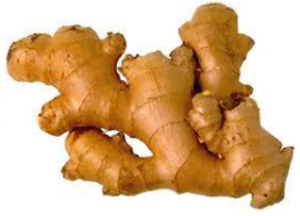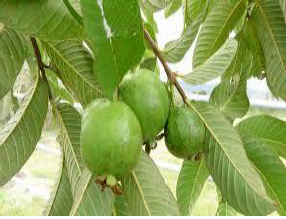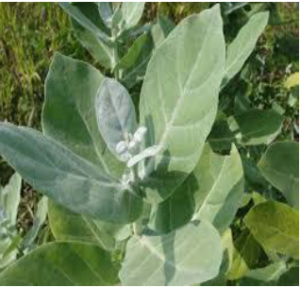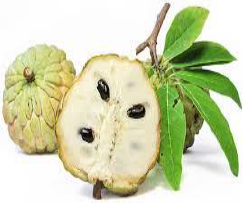Ethno-Veterinary Practices for Treatment and Management of Infectious Diseases of Farm Animals in India
Ethno-veterinary practice (EVP) is based on folk beliefs, traditional knowledge, skills, methods and practices to cure diseases and maintain health of animals (Mathias-Mundy and McCorkle, 1989; Tabuti et al., 2003). Affordability is one of the most important virtues of the ethno-veterinary system. Drawbacks to modern veterinary practice include questionable quality of allopathic drugs, development of chemo-resistance in livestock and user unfriendly effects such as high antibiotic and hormone residues in the milk and other animal products (Fielding, 1998; Monteiro et al., 1998; Mathias, 2004). Traditional veterinary medical knowledge systems is handed down orally from generation to generation which is disappearing because of rapid technological, socioeconomic, environmental, changes and as a result of loss of cultural heritage losses under the guise of civilization (Mathias Mundy and McCorkle, 1989, Nfi et al., 2001). EVP is used for the maintenance of good animal health in developing countries (Kudi, 2003).
Livestock are prone to several infectious and noninfectious diseases namely-mastitis, foot and mouth disease (FMD), hemorrhagic septicemia (HS), anthrax etc. which substantially affect the animal health and production. In rural India, lack of access to modern veterinary facilities to every village/area and/or input high cost in treatment and delay in treatment to these diseases resulting high mortality may responsible for huge economic loss of farmers. Hence, people of rural area relied to use of ethno-veterinary medicine (EVM), which are more readily available and cheaper. In-addition, indiscriminate and non-judicious use of antimicrobials and other veterinary drugs resulted in residues of Veterinary Medicinal Products (VMPs) observed in milk and other animal products which create health hazard to consumers and development of drug resistance. Plants based practices (Ethno-veterinary practices) have been used by livestock owners since time– honored where they have their own ways to identify, classify, diagnose and treat animals. India has plenty of natural medicinal plants, so farmers can exploit these advantages for their livestock towards herbal treatment for commonly occurring infectious diseases instead of routine allopathic treatment regimen. India is at the advantage as it is one of the world’s 12 mega diversity countries having about 8% of global plant genetic resources which can be the potent source of herbal medicines. Ancient ethno-veterinary literature suggests that the tribal, non-tribal and rural population have been using wild ethno-flora since long for curing diseases of the pet/domesticated animals. Ethno-veterinary medicine deals with people’s knowledge, skills, methods, practices and beliefs about the care of their animals. Almost all the parts of plants are used for the preparation of EVM products which includes leaves, bark, stem, root, seeds, flowers and fruits. They can be used for several infections, to improve production of productive animals.
Based on available scientific literature here are some of commonly used indigenous practices:
- Foot and mouth disease (FMD)
- 1% citric acid or alum solution or potassium permanganate or Methylene blue used for mouth and foot washing.
- Juice of sour fruits or lemon for washing of ulcerated tongue, foots and mouth twice a day.
- Application of neem or babool leaves paste with mustard oil on foot lesions.
- 10gm Boric acid (Suhaga) + 100gm jaggery/honey/glycerin mixture applied in mouth and tongue.
- Paste of Babool with Jamun bark or paste of peach leaves or Bantulsi for foot lesions.
- Musa paradisiaca (Kela)–paste and sugar candy in water is given to animal twice a day to cure the blisters and hoof sore(s).
- Oral feeding or topical application of Nicotiana tobaccum(Tobacco) leaves over foot lesions.
- CuscutareflexaRoxb.(Amar Bel) paste of the plant applied twice a day to the affected parts.
- Dalbergia sissoo Roxb. (Shisham) leaf paste is mixed with churning curd & used over the lesions
- Calotropis gigantea (Safed aak) root decoction applied on the infected foot thrice daily for 3-4 days to control foot rot disease
- Haemorrhagic Septicaemia (HS)
- Provide steam of oil of menthe-20ml, oil of Eucalyptus-20ml, oil of Camphor- 20ml and ammoniac salt- 20gm mixed in hot water.
- ArisaematortuosumSchott. (Bagh Jandhra) rhizome is crushed to extract the juice and fed to animal.
- Capsicum annuum. (Shimla mirch) fruit is powdered and boiled for few minutes. The soup is fed to animal
- Chopped leaves of Solanum incanum(Indian rennet) mixed with water and then sieved and applied in nose
- Boiled tamarind and camphor levees applied on affected part twice daily for one week.
- Crushed seed of Vernonia amygdalina Del (bitter leaf) mixed with water and filtered and applied by oral feeding and smeared on nose.
- Black quarter (BQ)
- Musa paradisiacal (banana) or Tamarindusindica(tamarind) or Aegle marmelos(wood apple/ Bael)leaves topically applied on femur bone to cure BQ
- Acalyphaindica (Kuppi, khokli) leaf juice is extracted and fed to the animal
- Wash the wound area once daily with potassium permanganate a dilution of 1:10,000 (0.01%).
- Anthrax
- Grinded leaf juice of Aloe trichosantha Berger applied by oral and nasal route
- AcalyphaindicaL (Kuppi, khokli) Whole part > juice extract > fed to animals suffer from anthrax.
- Desert date (Balanitesaegyptiaca(L.) Del). Homogenized juice of root extract with water fed orally to animals.
- Combination of tulsi (Oscimumsanctum), neem (Azadarichtaindica), longa (Curcuma longa), punarnava (Boerhaviadiffusa) and amrita (Tinosporacordifolia) act as natural antimicrobial agents.
- Mastitis
- Washing of teats with 1% boric or 0.1% potassium permanganate or 1% alum solution before and after milking.
- Application of paste of marigold (Genda) on udder and teats as it has anti-inflammatory action.
Ethnoveterinary practices in animal care
Tympany
Symptoms : Stomach bulged and difficulties in breathing
Causes : sudden change in feed materials, excess intake of legumes, dining waste.
Treatment
- 200 ml each of castor oil (Ricinus communis) and lukewarm water are shaken well and administered orally at an interval of 4-6 hrs for large animals.
- Betel leaves (paan) 10 number, ginger (Adrak) 20 gm, pepper (kalimirch) 10 gm, garlic (Lahsun) 10 gm, rock salt 50 gm are pounded and mixed in lukewarm water and administered orally at 6 hours interval for large animals.
- Reduce the quantity to small animals according to the body weight of animals.
Paan Adrak
Diarrhea
Symptoms : watery dung
Causes : Indigestion, intake of spoiled feed or eating toxic plants.
Treatment
Grind one handful each of tender leaves of pomegranate, tender leaves of neem, tender leaves of guava along with dried ginger 50 gm, jaggery 100 gm and make 3 bolus and administer one bolus at a time for 3 times until diarrhea gets cured.
Neem
Amrud , jamphal
Anaar
Constipation
Symptoms : Lack of defecation or hard pelleted dung
Causes : Fever, heat stress and dehydration
Treatment
- Enema can be given (boil 10 litres of water after adding 100 gm neem leaves and cooled and administer through rectum of large animals)
- Laxatives like castor oil, liquid paraffin oil, raw linseed oil (500ml) can be given for 1-2 days according to species and body weight of animal. Given as drench for 2-3 days or as required. A decoction of 100 gm of haldi (turmeric rhizome) in a lit. of water may be given once daily for 1-3 days to large animals.
Endoparasites (Intestinal worms)
Symptoms : Animals emaciated, thick body hairs, foul smelling stools with worms
Causes : Round worms, tape worms, hook worms infestation
Treatment
- Leaves of nirgundi (Vitex negundo), khorpad (Aloe vera), Neem seeds, kirayat (Andrographis paniculata), akamadar (Calotrophis) are to be taken at 1 kg each.
- All are to be ground well by sprinkling little water and filtered and 4 litres of herbal mixture can be obtained.
- This can be stored for one month.
- Then 30 ml of the extract is taken and administered for one adult sheep or goat.
- For younger sheep or goat less than 3 months old 10 ml has to be administered orally.
- For adult cattle 100 ml has to be administered.The dewomer arrest loose motion and result in solid dung and it is free from obnoxious odor.
- It increases grazing efficiency of animals and they look healthy.
Neem
Gheekumari
Batraj Nirgundi
Sindvar
Madara, Aak
Ectoparasites (Lice, Ticks, Mites)
Symptoms: Presence of parasites visible all over the body, animal emaciated, dull and death in severe cases
Treatment
- Garlic, Tulsi, neem leaves, turmeric, seethapal seeds each 10-20 gm are ground together and boiled in 250 ml of neem oil and applied over the surface of the body of large animal.
- Whole plant of Raimuniya (Lantana camara) is chopped and crushed and diluted with the urine of cattle 3 days and apply externally.
- Boil tobacco stalk 250 gm in 2 lit. of water and add 5 lit.of water and sprayed over the body of 10-20 animals.
Raimuniya
Seethapal
Tobacco
Respiratory tract infections
Symptoms : Heavy snoring, difficulty in breathing
Treatment
- Take leaves of Thulsi (Ocimum sanctum) 100 gm, leaves of arusha (Adhatoda vasica) 100 gm, ginger 50 gm, pepper 10 gm, jaggery 100 gm and boil in 1 lit. of water and administer 100 – 250 ml of the decoction 2-3 times daily.
- Few fruits (6-8 number) of kantakari / kateli (Solanum surattense) are crushed and soaked in goat urine over night and filtered and few drops are squeezed in to the nostrils.
Arusha
Kantakari / Kateli
Foot and mouth disease
Sympotms : Ulcers in mouth and cleft of hooves, drooping saliva and difficult to walk
Causes : Virus
Treatment :
- Ingredients required : Turmeric 200 gm (freshly harvested rhizome is preferred), coconut kernel extract (from 1 coconut), gheekumari (Aloe vera) – 200 gm, palm jaggery 200 gm, common salt 100 gm, garlic 100 gm, pepper 50 gm, cumin 50 gm, fenugreek 50 gm.
- The above ingredients viz. turmeric, gheekumari (Aloe vera), garlic, grated coconut are ground well through grinder/ mixi by using sufficient water and collected in a vessel.
- Then make powder of pepper, cumin, fenugreek and all ingredients are mixed together thoroughly and add sufficient water to make it about 1 liter.
- Then filter it and administer orally.
- Dose : 100 ml at a time for adult animals or 50 ml for young ones or sheep or goats. Before giving the treatment the animals are to be fed with banana (2 number) soaked in sesame oil (50 ml).
For treatment of wounds in the foot region:
A special wound healing thaila can be prepared by using following ingredients:
- Sesame oil 1 lit, haldi (freshly harvested preferred or turmeric powder 50gm) 100gm, garlic – 50gm; neem leaves 10 gm, leaves of mehanthi (Lawsonia inermis ) 10 gm, kuppi (Acalypa indica)10 gm.
- Grind the herbal items and mix with the oil and boil the oil well and filter it.
- The oil can be stored in a bottle. This thailam can be applied over the affected foot region of animals for 3 days continuously or till the point of cure.
OR
- Coconut oil 500 ml. and Datura leaf extract 500ml are taken together and boiled in a vessel till about one hour so as to get oily texture.
- Then put off the fire and add 5 gm of tuutiya (copper sulphate) and stir it well. Now this thailam is stored in a bottle and used for all types of wounds including maggot wounds in animals.
Also feed the animal with gruel prepared by boiling with ragi, wheat and bajra flour each 100 gm – 200gm with sufficient water in a vessel.
Datura kuppi
Haldi Gheekumari
Herbal masala bolus for all digestive problems
This preparation will be good for all digestive problems viz. anorexia, indigestion, off feed, absence of rumination, impaction etc.
Ingredients needed for 5 dairy animals / 10 sheep or goats are given below :
- Kalimirch (Black pepper) – 10 gm
- Jeera (cumin) – 10gm
- Dhaniya (coriander seeds) – 20 gm
- Fenugreek (methi) – 20 gm
- Ajwain (Trachyspermum ammi) – 10 gm
- Ginger (adrak) – 50 gm
- Haldi (turmeric) – 50 gm (fresh)
- Gheekumari (Aloe vera) – 100 gm
- Galo / batindu (Tinospora cordifolia) stem and leaves – 100 gm
- Lahsun (garlic) – 50 gm
- Lallmirch (red pepper /chillies) – 50 gm
- Paan (betel leaves) – 10 number
- Kari patta (curry leaf) – 100 gm
- Tulsi leaves – 50 gm
- Tarwar leaves and flowers (Cassia auriculata) – 100gm
- Nariyal (coconut) – 100 gm,
- Gud (jaggery) – 100gm
- Rock salt – 50 gm
- Khaneka soda (sodium bicarborate) – 100 gm.
Process for preparation
- First grind all dry items in a mixi viz. black pepper, jeera, coriander seeds, fenugreek, ajwain, red chillies). Then grind all the fresh herbs viz. Aloe vera, curry leaf, garlic, tulsi, ginger, turmeric, coconut (grated), galo and tarwar. After that mix together both the above items.
- Now add jaggery (after making into small pieces), and rock salt, (sodium bicarborate) and mix it thoroughly.
Dosage
- Make a bolus of 100 gm each (lemon fruit size) and administer orally.
- It can be given monthly once preferably in empty stomach.
- For young animals (calf, sheep or goat) give half the quantity or reduce the quantity according to the body weight of animals.
- The above preparation will be good for all digestive problems viz. anorexia, indigestion, impaction.
- This will also give some relief for repeat breeding/reproductive problems, internal parasites, act as preventive medicine for Foot and Mouth Disease, Blue Tongue, fever, mastitis, Hemorrhagic septicemia.
Gheekumari Galo / Batindu
Tarwar Karipatta
Mastitis in dairy animals
Symptoms : swollen, hot udder; milk discolored with pus and thread like substance
Causes : Microbes
Treatment
- Ingredients required: Gheekumari (Aloe vera ) – 2 or 3 petal, Haldi (Turmeric) powder- 50gm, Chunna (Lime stone)- 10 gm
- All the above ingredients are ground well and made in to a paste apply over the udder thrice a day for 3-7 days depending upon the disease incidence.
- Before applying, the udder and teats should be washed with boiled water for 3 times for 5 days.
Administer orally 50 gm of khaneka soda (sodium bicarbonate) in the juice of lemon (4 fruits) dissolved in 200 ml of water.
Gheekumari Haldi
Infertility
- For animals suffering repeat breeding, infertility or suboestrus or not coming to heat the following method has to be followed.
- Administer orally Gheekumari (Aloe vera) 1-2 petals for 3 days in the empty stomach.
- Administer orally sprouted chana dal (bengal gram) or sprouted bajra or sprouted wheat (200 gm daily) for 15 days.
- When signs of oestrus cycle is noticed administer orally neem oil 100-150ml before taking the animal for insemination or natural crossing.
Chana dal Gheekumari
Retention of placenta
Symptoms : Non – shedding of placenta beyond 3-5 hours post-partum
Treatment
- The leaves of two sesame plants (Sesamum indicum) about 250 gm are pounded with 1000 ml of water and drenched; placenta would be shed in 1to 2 hour.
- Take Bada goksur (Peadlium murex) plant about 200 gm, pound and soaked in 1000 ml of water and stir well and drenched.
Sesame plants Bada goksur
Prolapse of the uterus
Treatment :
- Clean the mass with sugar added water or any antiseptic lotion.
- Lift the mass by placing banana leaf with both hands (special care must be taken to avoid laceration or tear with nails, and hand must be washed in the antiseptic lotion).
- Mostly the urinary bladder will be filled. After lifting of the mass urine will easily go out and the mass will easily go inside.
- Leaves of Chhui-Mui (Mimosa pudica) whole plant two handfuls are ground well and mixed with 200 ml goat’s milk to be administered orally for three times (morning, evening and next day morning).
- Keep the animal in a slightly slanting position in such a way that keeping the head portion in a lower level atleast for a week.
Chhui-Mui
Blue tongue disease in sheep and goats
During rainy season, sheep farmers face economic loss due to sudden death of sheep by a new disease called as blue tongue disease.
Symptoms:
- Ulcer in the mouth, oozing of fuzz like substance from the mouth and limping while walking and sometimes in the lying position.
- If the animal is lifted the hairs in the body will fall off.
- Animals will not take feed but drink little water.
- In the severity of the disease the animal will die on 15th day or so.
Cause :
This disease is caused by a virus and mosquitoes or insects act as vectors.
Treatment
The animal has to administered orally the following recipe.
- Banana fruits smeared with sesame oil and fed to animals for 2 to 3 times.
- Half a litre of oil with 20 bananas are sufficient to treat 20 sheep.
- By this animal will recover little. However, this will not control the disease fully.
- Next the leaf pulp of Aloe vera (100 gm) has to be administered daily. Administering of Aloe vera has to be continued for more days till the animal fully recovers from this disease. Administering Aloe vera also increases the body weight of animals as it acts as dewormer against all intestinal parasites. This can also be administered as preventive treatment on monthly interval especially during rainy season.
Gheekumari
Poisonous bite or food poisoning
- Leaves of betelvine, tulsi, pepper, dried ginger each 10 gm. are pound together and mixed in warm water and administered orally.
- For poisonous bite, few drops of this extract are instilled to the eyes of the animal.
Paan Tulsi
Eye injuries
- Leaves of bimba (Coccinia grandis) or castor (Ricinus communis) is crushed by mixed with a pinch of salt and the juice is applied for few drops in the eyes.
Bimba Castor
Wounds
- Prepare special thaila (oil) and apply over the wound: Coconut oil 250 ml. and Datura leaf extract 250ml are taken together and boiled in a vessel till about one hour so as to get oily texture.
- Then put off the fire and add 2.5 gm of copper sulphate and stir it well.
- Now this thaila is stored in a bottle and used for all types of wounds including maggot wounds in animals.
Datura
Panchagavya for animal health
- This preparation overcome problems of infertility or repeat breeding.
- Mix 5 products of cow (dung, urine, milk, curd, ghee) together by taking 1 kg of cow dung, 1 lit of milk, 1 lit of curd, 1 lit cow urine, 100 gm of ghee together.
- In addition add 2 banana, sugarcane juice 1litre are added in a plastic barrel and allow them for 1 week for fermentation.
- Now administer 200 ml-300 ml of panchagavya monthly once for general upkeep of cattle or 100 ml for sheep or goat on monthly basis .
- For dogs affected with skin disease (oozing of body fluid from the skin) can be given by administering 100 ml of panchagavya for 3 days continuously.
- For poultry birds mix about 50 ml of panchagavya along with feed for feeding a dozen birds.
- Panchagavya fed chicken lay eggs of bigger size and also the growth of the bird is quick and faster.
Milk fever or calcium deficiency
- The disease usually occurs in dairy animals caused by decrease in blood-calcium level, generally within 48 hours after calving.
- Take 1 kilo of lime (Calcium hydroxide) and put in a mudpot.
- Add 20 litres of water and keep it overnight. Take 200 ml of supernatent water (top watery layer) and feed the animal daily.
- While taking the upper layer of water add equal quantity of fresh water of 200 ml daily.
- Every 20 days change the whole content.
- This practice can be followed regularly and it prevents diseases caused due to calcium deficiency
Poultry diseases
Ranikhet disease
Symptoms : Diarrhea, excreta is watery, green with foul odor; discharge from the nose; coughing and sneezing; swelling of the head; head and neck twisted to one side; drooping wings, dragging legs; sleepiness; full, distended drop; convulsions and paralysis; death.
Precaution : The disease affected chicken are to be removed and kept separately.
Treatment
- Leaves of utarn (Pergularia daemia) 20 gm, leaves of kirayat (Andrographis paniculata) 20 gm, fresh haldi (turmeric: Curcuma longa) 20 gm, garlic 20 gm and onion 20 gm are chopped together and fed with other poultry feed occasionally as preventive or curative treatment.
Utarn kirayat
Haldi
Lice infestation of poultry
Symptoms : Small, white lice lay eggs on the feathers; lice moving on skin and feathers; reduced egg production; slower weight gain; birds constantly peck at themselves or scratch themselves with their beak.
Treatment
- Spread crushed leaves of sithapal (Annona squamosa) or Calotrpis inside poultry nest and lice collected over the leaves can be disposed off hygienically.
- Garlic, Tulsi, neem leaves, seethapal seeds, haldi (turmeric) each 10-20 gm are ground together and boiled in 250 ml of neem oil and applied over the surface of the body of 10-15 birds.
Seethapal Haldi
Lasun Neem
Tulsi
DR JITENDRA SINGH, DYCVO,UP
REFERENCE-ON REQUEST
IMAGE-CREDIT GOOGLE




